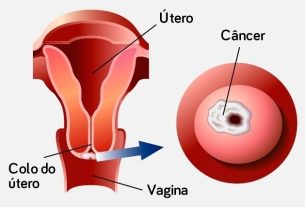Remedies for pelvic inflammatory disease are mainly antibiotics, such as doxycycline, ceftriaxone or metronidazole, as they act by preventing the multiplication or killing of bacteria or protozoa, responsible for causing pelvic inflammatory disease, and can be used at home or in a hospital environment.
Pelvic inflammatory disease (PID) is an infection that begins in the vagina or cervix and is more common in women who are sexually active or who have an IUD intrauterine device, leading to symptoms such as fever, pain in the abdomen or vaginal bleeding. Find out the main causes and symptoms of pelvic inflammatory disease.
Treatment for pelvic inflammatory disease should be started as early as possible, with guidance from a gynecologist, to prevent complications, such as infertility or the possibility of having an ectopic pregnancy, due to the development of lesions in the fallopian tubes. Depending on the severity of the disease, a surgical procedure may be necessary to treat inflammation or drain abscesses, for example.

Main remedies for PID
Treatment for acute pelvic inflammatory disease consists of the use of antibiotics, oral or injected, for around 14 days, or according to medical prescription.
The main antibiotics recommended by your doctor for pelvic inflammatory disease are:
Generally, PID treatment is done with a combination of antibiotics, such as ceftriaxone, doxycycline and metronidazole, or clindamycin and gentamicin, for example, in order to treat sexually transmitted infections (STIs), such as gonorrhea or chlamydia, or bacterial vaginosis, that may be causing pelvic inflammatory disease.
During treatment, it is important for the woman to rest, not have intimate contact, remove the IUD if using it and take medication to relieve pain such as paracetamol or ibuprofen. In addition, the partner must also be treated, even if there are no symptoms, to avoid recontamination or manifestation of the disease.
After 72 hours of starting treatment with antibiotics, the woman must be evaluated again by the gynecologist to check whether the chosen treatment had good results. If symptoms do not improve, hospitalization may be necessary for intravenous treatment. Know how to identify all the symptoms of PID.
If the disease worsens and there is a possibility of rupture of abscesses in the tubes, surgical intervention may be necessary to clean and drain the abscesses.
Read too: 4 treatments for pelvic inflammatory disease (and care)
Possible complications of PID
When treatment for pelvic inflammatory disease is not started quickly, the disease can develop and cause various types of scars in the female reproductive system, which can result in several complications such as:
- Ectopic pregnancy: this happens because the presence of scars in the tubes can prevent the egg from leaving the uterus, which ends up being fertilized by sperm, generating a pregnancy in the tubes;
- Infertility: depending on the places where PID scars develop, the woman may experience infertility;
- Abscesses in the ovaries: scars can result in the accumulation of pus, which causes the development of abscesses in the reproductive system. These abscesses can end up opening and causing bleeding or widespread infection.
Furthermore, women with pelvic inflammatory disease who are not undergoing any type of treatment also experience chronic pelvic pain, which ends up reducing their quality of life.
Signs of improvement
Signs of improvement in pelvic inflammatory disease generally appear a few days after starting treatment and are related to the reduction of pelvic pain, regulation of menstrual losses and relief of fever, if any.
In cases where the woman did not present any symptoms, signs of improvement can be observed by the gynecologist through tests such as ultrasound or laparoscopy.
Signs of worsening
Symptoms of worsening PID usually occur when treatment is not started in time and, as a result, scars appear in the reproductive system that can end up causing bleeding outside the menstrual period, fever and even increased pelvic discomfort, with pain when urinating and during intimate contact.
Bibliography
- SAVARIS, RF; et al. Antibiotic therapy for pelvic inflammatory disease. Cochrane Database Syst Rev. 8. 8; CD010285, 2020
- MINISTRY OF HEALTH, HEALTH SURVEILLANCE SECRETARIAT, DEPARTMENT OF STD, AIDS AND VIRAL HEPATITIS. Clinical Protocol and Therapeutic Guidelines for Comprehensive Care for People with Sexually Transmitted Infections. 2015. Available at: <https://bvsms.saude.gov.br/bvs/publicacoes/protocolo_clinico_diretrizes_terapeutica_atencao_integral_pessoas_infeccoes_sexualmente_transmissiveis.pdf>. Accessed on September 8, 2022
- WIESENFELD, H. C.; et al. A Randomized Controlled Trial of Ceftriaxone and Doxycycline, With or Without Metronidazole, for the Treatment of Acute Pelvic Inflammatory Disease. Clin Infect Dis. 72. 7; 1181-1189, 2021
- RAVEL, J.; et al. Bacterial vaginosis and its association with infertility, endometritis, and pelvic inflammatory disease. Am J Obstet Gynecol. 224. 3; 251-257, 2021
- CURRY, A.; et al. Pelvic Inflammatory Disease: Diagnosis, Management, and Prevention. Am Fam Physician. 100. 6; 357-364, 2019
- JENNINGS, L. K.; KRYWKO, D. M. IN: STATPEARLS (INTERNET). TREASURE ISLAND (FL): STATPEARLS PUBLISHING. Pelvic Inflammatory Disease. 2022. Available at: <https://www.ncbi.nlm.nih.gov/books/NBK499959/>. Accessed on September 8, 2022

Sign up for our newsletter and stay up to date with exclusive news
that can transform your routine!
Warning: Undefined array key "title" in /home/storelat/public_html/wp-content/plugins/link-whisper-premium/templates/frontend/related-posts.php on line 12
Warning: Undefined array key "title_tag" in /home/storelat/public_html/wp-content/plugins/link-whisper-premium/templates/frontend/related-posts.php on line 13




